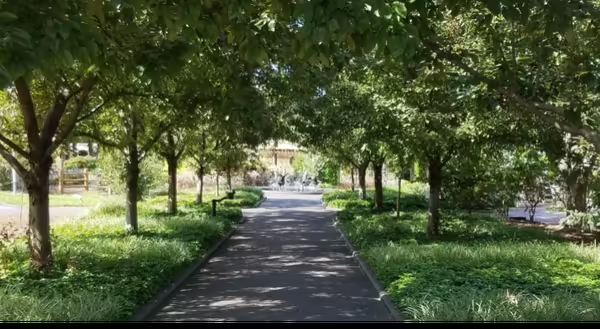
Last month, the US Forest Service released a technical report titled, “Climate Adaptation Actions for Urban Forests and Human Health.” The report includes a summation of the current research related to urban trees and climate change, looking at how trees benefit human health, how climate change is impacting urban trees and how we can help our urban forests adapt. It focuses on trees at the community-level offering a “menu” of options for urban planners and community leaders to employ that boost the resiliency of urban forests, some of which are highlighted in this week’s blog.
Urban Trees Reduce Heat
One of the biggest threats to human health from climate change lies in the increased frequency and duration of heat waves. Across the US, the number of days with temperatures over 100°F is expected to increase nearly threefold by 2050. These extreme heat events account for the most weather-related deaths in the US annually and can be intensified in urban areas due to the heat island effect created by high concentrations of dense, heat-retaining surfaces such as concrete, pavement and buildings.
Trees work to dissipate heat in urban areas through both shading and transpiration. They counteract the heat island effect by cooling dense surfaces with their shade and influencing the microclimate around them. However, the presence of dense, impervious surfaces in urban spaces does not accommodate trees well, requiring additional planning to ensure the distribution of trees and heat-retaining surfaces are both compatible and equitably distributed across communities.
Extreme heat will also impact tree health, having considerable effect on large, mature trees. Since mature tree canopies provide the most cooling benefit, communities need to plan to provide protection and additional care of mature shade trees, including watering, monitoring for insects and disease and other aspects of tree health care.
In most urban settings, the rooting area available for mature trees is often limited by impervious services and other features of the built environment. As canopies expand, restricted root systems have a more and more difficult time supporting the above-ground growth. Additional tree care during times of extreme heat and drought can work to counteract these stressors and may be necessary as our annual number of days with extreme heat increases.
Plantings using native grasses and forbs also help to reduce the heat island effect and can fit into smaller spaces with less available rooting zone. The addition of native plants can be a great alternative when space is too limited for large trees.
Air Quality and Urban Trees
Tree pollen contributes to seasonal air quality, impacting human health each allergy season. Climate change is already increasing the pollen production season for all plants and is predicted to continue this trend over time. While household allergens and pollen from other plants (such as ragweed) are larger contributors to allergy symptoms, tree pollen is certainly part of the problem.
However, trees can also be part of the solution, since a diverse urban forest canopy, with a variety of different canopy structures, can actually work to better intercept pollen and improve air quality. At the community-scale, more diverse plantings with respect to canopy size and shape can help reduce the amount of pollen in the air from both trees and other plants.
Planting choices can also favor trees with pollen that is not as easily wind dispersed and contributes much less to allergies. Trees such as dogwood, redbud, tulip poplar, catalpa, flowering crabapple and magnolia all produce less pollen that is carried by wind. Some of the worst offenders are native trees such as oak, maple, ash, sycamore and other natives that rely exclusively on wind pollination. Urban plantings can focus on a variety of canopy structures and fewer wind pollinated, male trees to reduce the impact of longer pollen producing seasons.
Storm Damage Risk and Mitigation
Climate change is increasing the incidence and intensity of extreme storms and wind resulting in an increased potential for storm damage to trees. The large extensive canopies of mature urban trees provide great benefits in the way of cooling and allergen inception, but also are more prone to branch failure.
Tree planting choices can also work to increase storm resiliency by excluding damage-prone species like Callery pear, silver maple and Siberian elm. Existing mature trees can be inspected and pruned prior to storm events to improve their ability to withstand damaging winds. Proper pruning across a tree’s lifespan greatly reduces the risk of canopy failure from storms and other impacts.
As climate change has a greater impact on Midwestern weather patterns, preventative pruning is going to be more and more important to preserve mature trees in our landscapes. In fact, all aspects of tree care are going to be increasingly important to ensure a healthy and diverse urban forest as climate change puts new stresses on the built environment.
References:
Janowiak, MK, LA Brandt, KL Wolf, M Brady, L Darling, A Derby Lewis, RT Fahey, K Giesting, E Hall, M Henry, M Hughes, JW Miesbauer, K Marcinkowski, T Ontl, A Rutledge, L Scott, CW Swanston. 2021. Climate adaptation actions for urban forests and human health. Gen. Tech. Rep. NRS203. Madison, WI: U.S. Department of Agriculture, Forest Service, Northern Research Station. https://www.nrs.fs.fed.us/pubs/62807